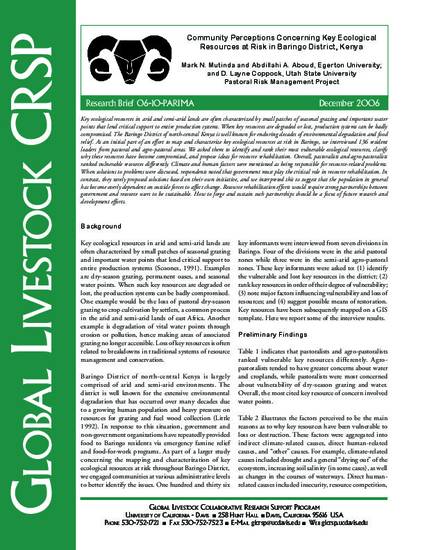
Key ecological resources in arid and semi-arid lands are often characterized by small patches of seasonal grazing and important water points that lend critical support to entire production systems. When key resources are degraded or lost, production systems can be badly compromised. The Baringo District of north-central Kenya is well known for enduring decades of environmental degradation and food relief. As an initial part of an effort to map and characterize key ecological resources at risk in Baringo, we interviewed 136 resident leaders from pastoral and agro-pastoral areas. We asked them to identify and rank their most vulnerable ecological resources, clarify why these resources have become compromised, and propose ideas for resource rehabilitation. Overall, pastoralists and agro-pastoralists ranked vulnerable resources differently. Climate and human factors were mentioned as being responsible for resource-related problems. When solutions to problems were discussed, respondents noted that government must play the critical role in resource rehabilitation. In contrast, they rarely proposed solutions based on their own initiative, and we interpreted this to suggest that the population in general has become overly dependent on outside forces to affect change. Resource rehabilitation efforts would require strong partnerships between government and resource users to be sustainable. How to forge and sustain such partnerships should be a focus of future research and development efforts.
Available at: http://works.bepress.com/layne_coppock/16/
